Jog Raj*, Hunor Farkaš, Svetlana Ćujić, Zdenka Jakovčević, and Marko Vasiljević
PATENT CO, DOO., Vlade Ćetkovića 1A, 24 211, Mišićevo, Serbia.
*Autor correspondiente: [email protected]
⇰ The samples were delivered to PATENT CO’s lab between August and October 2023.
In this survey, approximately 400 samples were analyzed for multiple mycotoxins by LC-MS/MS triple quadrupole (Agilent 6460 series) using a multi-mycotoxin method for the quantification of all the mycotoxins present, including:
 Aflatoxins (AFB1, AFB2, AFG1 and AFG2)
Aflatoxins (AFB1, AFB2, AFG1 and AFG2) α-zearalenol (α-ZEL), β-zearalenol (β-ZEL), zearalanone (ZAN) and zearalenone (ZEN)
α-zearalenol (α-ZEL), β-zearalenol (β-ZEL), zearalanone (ZAN) and zearalenone (ZEN) Diacetoxyscirpenol (DAS)
Diacetoxyscirpenol (DAS) HT-2 toxin and T-2 toxin
HT-2 toxin and T-2 toxin 3-acetil deoxynivalenol (3-ADON), 15-acetil deoxynivalenol (15-ADON) and deoxynivalenol (DON)
3-acetil deoxynivalenol (3-ADON), 15-acetil deoxynivalenol (15-ADON) and deoxynivalenol (DON) Nivalenol (NIV)
Nivalenol (NIV) Fumonisins (FB1, FB2 and FB3)
Fumonisins (FB1, FB2 and FB3) Fusaric acid (FA)
Fusaric acid (FA) Moniliformin (MON)
Moniliformin (MON) Ochratoxin A (OTA)
Ochratoxin A (OTA) Beauvericin (BEA)
Beauvericin (BEA) Enniatin A (ENA), enniatin A1 (ENA1), enniatin B (ENB) and Enniatin B1 (ENB1).
Enniatin A (ENA), enniatin A1 (ENA1), enniatin B (ENB) and Enniatin B1 (ENB1).

MYCOTOXINS IN WHEAT 
In 2023, 95% of the wheat samples from Serbia, Bosnia & Herzegovina, Croatia, and Hungary were contaminated with more than one mycotoxin.
4% of the samples did not contain any mycotoxin, whereas 1% of the samples were contaminated with one mycotoxin (Figure 1).
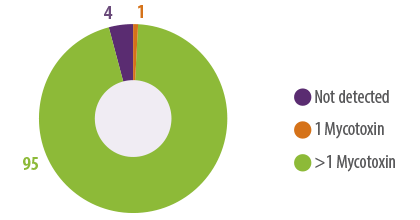
Figure 1. Number of mycotoxins per sample detected in wheat samples harvested in Serbia, Bosnia & Herzegovina, Croatia, and Hungary in 2023.
Table 1 shows that Fusarium-related mycotoxins were the most predominant in 2023 harvested wheat samples from Serbia, Bosnia & Herzegovina, Croatia, and Hungary.
⇰ DON, with an average of 1322 ppb, was detected in 66% samples.
Among emerging mycotoxins:
 FA was detected in 61% of the samples
FA was detected in 61% of the samples ENNB, ENN B1, ENNA1, and ENN A were detected in 95%, 88%, 78%, and 48% of the samples, respectively.
ENNB, ENN B1, ENNA1, and ENN A were detected in 95%, 88%, 78%, and 48% of the samples, respectively. BEA was detected in 61% of the samples.
BEA was detected in 61% of the samples. MON was detected in 9% of the samples.
MON was detected in 9% of the samples.
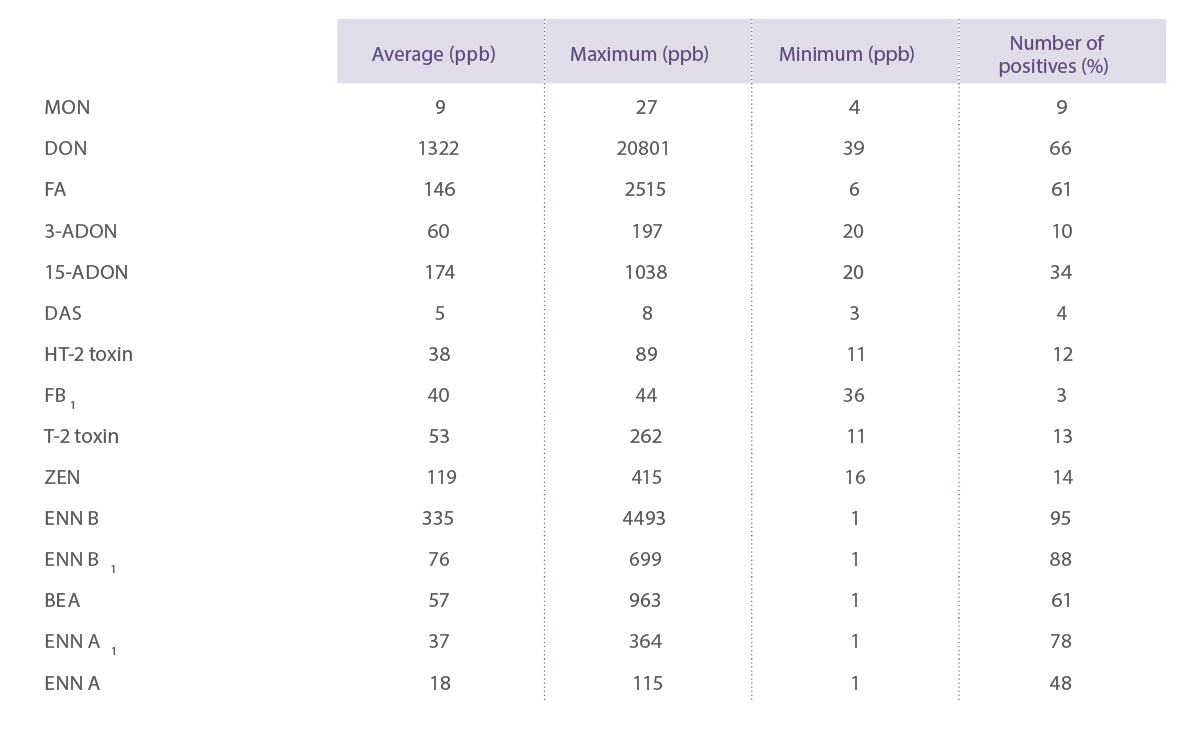
Table 1. Mycotoxin contamination levels (ppb) in wheat samples from Serbia, Bosnia & Herzegovina, Croatia, and Hungary harvested in 2023.

MYCOTOXINS IN BARLEY
In 2023, only 2% of the barley samples from Serbia, Bosnia & Herzegovina, Croatia, and Hungary were not contaminated with any mycotoxin whereas 98% of the samples were found to contain more than one mycotoxin (Figure 2).
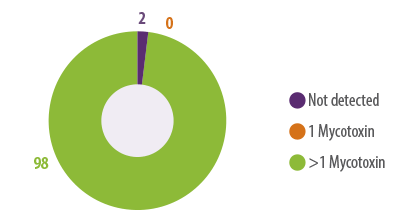
Figure 2. Number of mycotoxins per sample detected in barley samples harvested in Serbia, Bosnia & Herzegovina, Croatia, and Hungary in 2023.
Table 2 shows that Fusarium-related mycotoxins were the most predominant in the 2023 harvested barley samples.
⇰ DON, with an average of 845 ppb, was detected in 54% samples, FB1 in 4% and T-2 toxin in 24% of the barley samples.
Among emerging mycotoxins:
 FA was detected in 34% of the samples.
FA was detected in 34% of the samples. BEA was detected in 75% of the samples.
BEA was detected in 75% of the samples. ENNs were detected in almost all the samples.
ENNs were detected in almost all the samples.
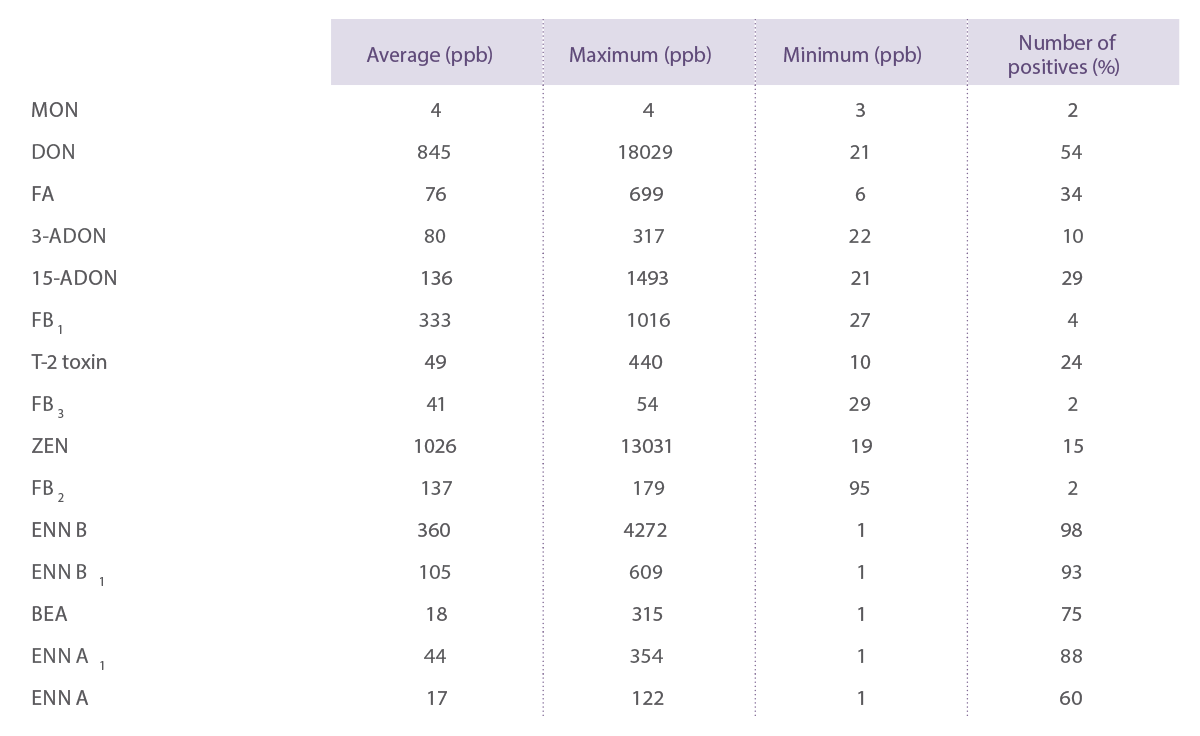
Table 2. Mycotoxin contamination levels (ppb) in barley samples from Serbia, Bosnia & Herzegovina, Croatia, and Hungary harvested in 2023.

CONCLUSIONS ![]()
In 2023, the wheat harvested in Serbia, Bosnia & Herzegovina, Croatia, and Hungary was contaminated with more than one mycotoxin.
⇰ DON and emerging mycotoxins FA, MON, BEA and ENNs were the predominant mycotoxins detected in wheat samples.
In 2023, 98% of the barley samples from Serbia, Bosnia & Herzegovina, Croatia, and Hungary were contaminated with more than one mycotoxin.
⇰ DON and emerging mycotoxins such as FA, MON, BEA and ENNs were the predominant mycotoxins detected in most of the barley samples.

The co-occurrence of more than one mycotoxin can lead to additive or synergistic effects when fed to sensitive animal species (swine and poultry, amongst others).

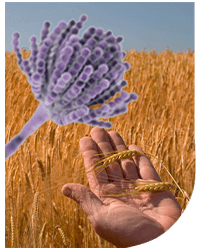



 Micotoxicosis prevention
Micotoxicosis prevention